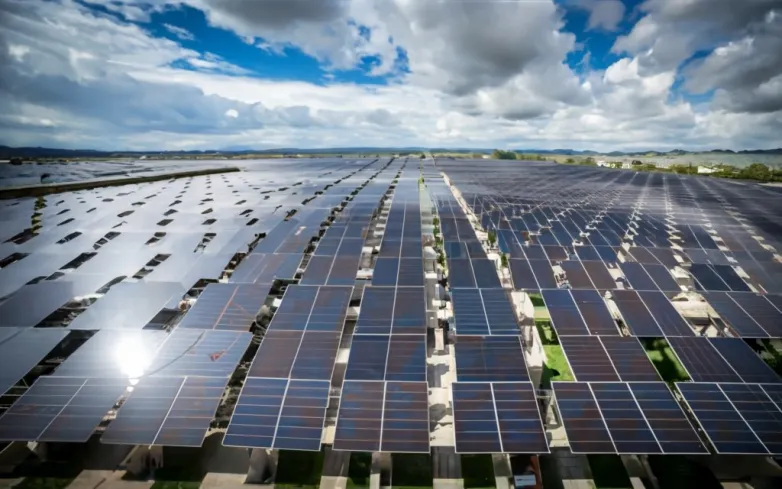Breakthrough: World's Most Efficient Quantum Dot Solar Cells Unveiled
- UNIST research team achieves groundbreaking 18.1% efficiency with world's most efficient quantum dot solar cell, paving the way for next-gen solar cell commercialization.

A research team led by Professor Sung-Yeon Jang from the School of Energy and Chemical Engineering at UNIST has developed the world's most efficient quantum dot (QD) solar cell. The team used a novel ligand exchange technique to synthesize organic cation-based perovskite quantum dots (PQDs), which demonstrated exceptional stability and suppressed internal defects in the photoactive layer of solar cells. The QD solar cells achieved an impressive 18.1% efficiency, the highest among quantum dot solar cells recognized by the National Renewable Energy Laboratory (NREL) in the US. The findings were published in Nature Energy.
The development of efficient QD solar cells is significant for the commercialization of next-generation solar cells. Quantum dots are semiconducting nanocrystals that can control photoelectric properties based on their particle size. PQDs have garnered attention due to their outstanding photoelectric properties and simple manufacturing process. However, the practical use of QDs as solar cells requires a technology that reduces the distance between QDs through ligand exchange. The research team's breakthrough in ligand exchange enables the creation of a photoactive layer of QDs with high substitution efficiency and controlled defects, resulting in improved efficiency and stability of organic PQD solar cells.
What is the significance of the research team's ligand exchange technique for QD solar cells?
- The ligand exchange technique developed by the research team is significant for the commercialization of next-generation solar cells.
- Quantum dots (QDs) are semiconducting nanocrystals that can control photoelectric properties based on their particle size.
- Perovskite quantum dots (PQDs) have outstanding photoelectric properties and a simple manufacturing process, making them a promising material for solar cells.
- However, the practical use of QDs as solar cells requires a technology that reduces the distance between QDs through ligand exchange.
- The research team's ligand exchange technique enables the creation of a photoactive layer of QDs with high substitution efficiency and controlled defects.
- This breakthrough in ligand exchange results in improved efficiency and stability of organic PQD solar cells.
- The QD solar cells developed by the research team achieved an impressive 18.1% efficiency, the highest among quantum dot solar cells recognized by the National Renewable Energy Laboratory (NREL) in the US.
- The exceptional stability of the PQDs synthesized using the ligand exchange technique is crucial for the long-term performance and durability of solar cells.
- The controlled defects in the photoactive layer of the QD solar cells contribute to enhanced charge transport and reduced recombination, leading to higher efficiency.
- The development of efficient QD solar cells opens up new possibilities for renewable energy generation, as they can be manufactured using a simple and cost-effective process.
Also read
- CNNP Optoelectronics brings utility-scale perovskite modules out of the lab
- Low-Temperature Sequential Deposition Lifts Inverted Perovskite Solar Cells Efficiency Record
- Self-Assembling Molecule Breakthrough Brings Commercial Perovskite Solar Closer to Market
- Camphor Additives Boost Perovskite Solar Cell Efficiency
- NUS Sets Record With 26.4% Perovskite-Organic Solar Cell
